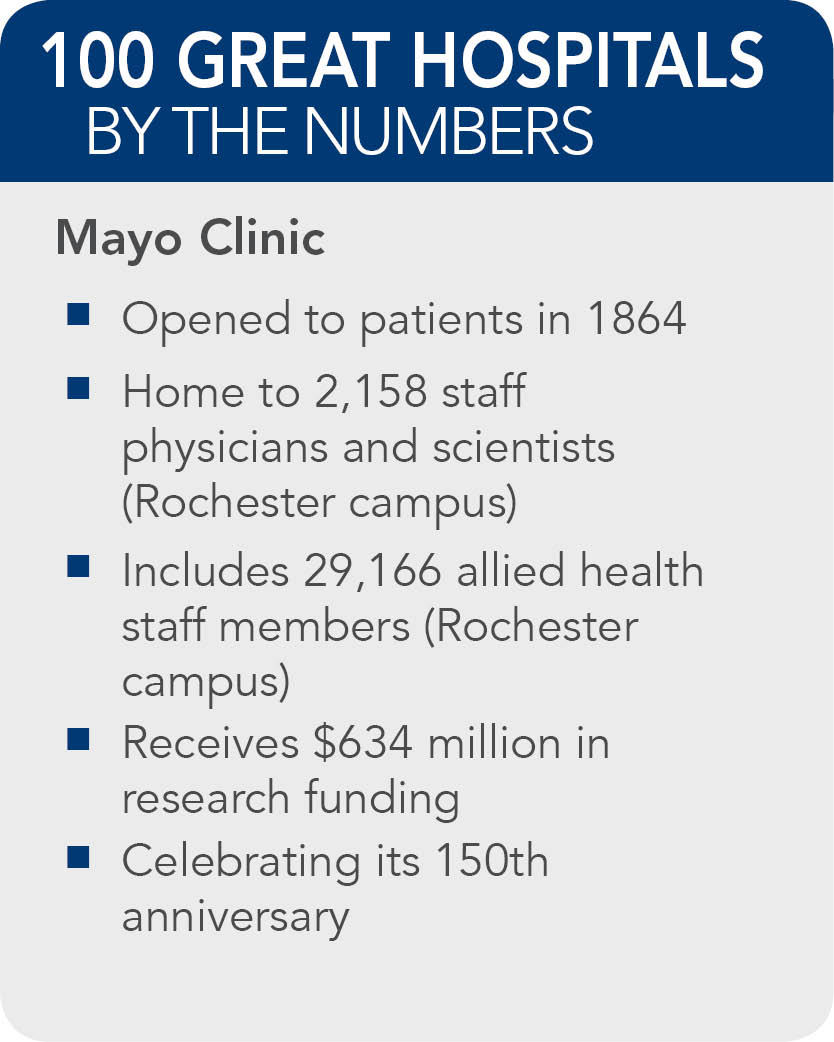Mayo Clinic (Rochester, Minn.). Mayo Clinic dates back to 1864 when William Worrall Mayo, MD, opened a private medical practice in Rochester. Now, the hospital has an international presence and is known for pioneering an approach to teamwork that sets the Mayo Clinic apart.

The Mayo Clinic — which didn't take on the Mayo Clinic name officially until March 1914 — is celebrating its sesquicentennial this year. It is ranked as the No. 1 hospital in Minnesota by U.S. News & World Report and is ranked as the third best hospital in the nation overall, appearing on the publication's hospital Honor Roll.
The Mayo Clinic's reach now extends far beyond its Minnesota roots. The system has locations throughout the Midwest, Arizona and Florida, and it plays home to 55,000 physicians, nurses, scientists, students and allied health staff at all of its locations.
The hospital's impact even reaches beyond healthcare through unique research initiatives. For instance, during World War II, Mayo Clinic assembled a multidisciplinary team known as the Mayo Aero-Medical Unit, which became responsible for developing practices to keep military pilots safe and healthy. The team innovated items like the G-Suit and high-altitude oxygen mask, and its work also contributed to the success of open-heart surgery. Now, the Mayo Clinic receives about $634 million in research funding from the government, foundations and industry groups, as well as through funds and benefactor gifts.

 |
 |


